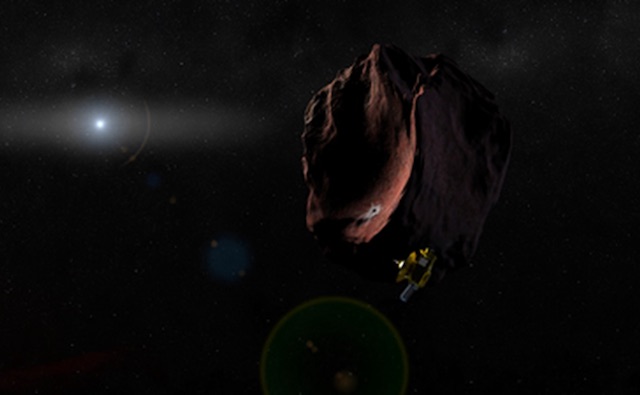The New Horizons space probe that whizzed by not-quite-planet Pluto—a cruel switcheroo, considering Pluto was demoted from planet status just months after New Horizons launched—last year and gave us a clearer picture of that distant object than ever before is now off towards a new destination. It won’t get there for a few more years, but it’s already sent back its first observations of another ancient space relic.
New Horizons’ next target is 2014 MU69, an object in the Kuiper Belt, the distant band of early solar system debris out beyond Pluto. On its way there, it’s been observing another, called 1994 JR1. It orbits the sun at a distance of 3 billion miles, or about 32 times as far as the sun is from us, and is only about 90 miles wide. With its Long Range Reconnaissance Imager, New Horizons has taken new images of the object at a distance of 69 million miles—the closest imagery of any Kuiper Belt object (KBO), ever—which, combined with earlier images, has allowed it to pinpoint 1994 JR1’s location in space down to a range of 600 miles.
The New Horizons science team was also able to determine the object’s rotational period at just 5.4 hours, which team member John Spencer described as “relatively fast for a KBO.” The location and duration of its spin may not seem like a lot, but aside from Pluto, whose exploration New Horizons itself on just pioneered, we don’t really know a lot about KBOs, so any new information is exciting.
Even more exciting is what New Horizons will find when it eventually reaches 2014 MU69—which it will fly by at a distance of just 7,800 miles—and the 20 other KBOs it could observe pending approval of its mission extension. That’s not because 2014 MU69 itself is likely anything special, but because of the Kuiper Belt’s nature as a part of our solar system that hasn’t changed much since its very formation. That means the more we can learn about KBOs, the more we might understand about how everything in our little corner of the Universe came to be.
(image via NASA/Johns Hopkins University Applied Physics Laboratory/Southwest Research Institute/Steve Gribben)
—The Mary Sue has a strict comment policy that forbids, but is not limited to, personal insults toward anyone, hate speech, and trolling.—
Follow The Mary Sue on Twitter, Facebook, Tumblr, Pinterest, & Google+.









Published: May 19, 2016 05:11 pm